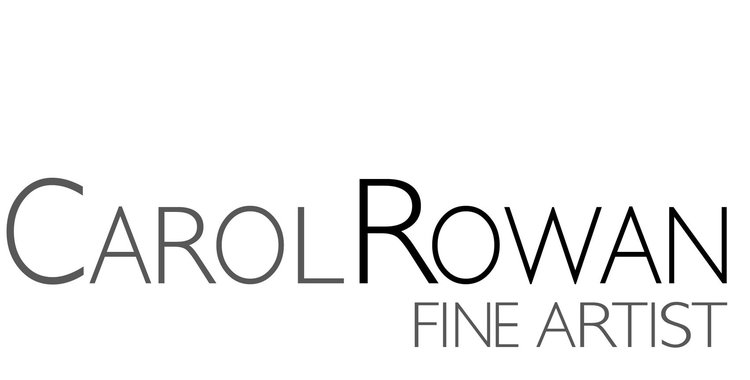”A Shared Past,” by Tina Coplan, Home and Design magazine, July/August 2016
Carol Rowan celebrates Americana in her paintings and intricately detailed graphite drawings
The painting of an unfurled flag is nearly complete. Artist Carol Rowan picks up a small brush and applies a fine line of blue, carefully delineating the soft folds and faded colors of the timeworn Stars and Stripes. Rowan brings a similar intensity to her portrayal of other sites burnished by time—the weathered boards and shingles of an aged wood barn, the subdued shine on a 1952 Willys pickup truck, the whitewashed surface of a historic lighthouse bathed in sunlight.
“I love old Americana,” says Rowan. With her penetrating gaze, slim frame and upright bearing, the artist could be descended from the stalwart figures in Grant Wood’s archetypal painting, “American Gothic.”
Rowan’s art respectfully revisits terrain from a shared past. It also pays tribute to her own roots in New England. Her father’s family arrived on the shores of Gorham, Maine, in 1648. In “Before She Blew Down,” a detailed graphite drawing, she reimagines the ancestral homestead as it might have been.
These days, the artist divides her work between two studios: one in her Woodley Park townhouse and another in the mid-19th-century home that she and her partner bought in Nobleboro, Maine. “I love going there,” says Rowan of this farming community located one hour north of where her family first settled. “The light is fabulous. The quality of the air is amazing. I like painting and drawing the barns, fields, coast, boats—the entire place.”
Along the Benjamin River in Brooklin, Maine, where the country’s premier wooden boat builders are clustered, she discovered a bounty of classic sailing dinghies that resurface in her paintings and drawings. And it was in the barn beside her house that she found the flag depicted in her current painting.
Rowan’s reverence for the outdoors came about when she was growing up in Rowayton, Connecticut. “We lived in a very small house, so I was always outside on my bike, playing tennis or swimming,” she recalls. She also played the cello, practicing on weekdays and for three hours on Saturday mornings from the age of ten. By the time she reached high school, Rowan was a cellist with the celebrated Norwalk Youth Symphony.
“I learned discipline from my dad, an organist, who practiced every night after coming home from a full day of work,” she says. She also remembers going with her mother, an English teacher, to the Yale University Art Gallery in New Haven, and staring at a Pollack painting “forever. There was so much energy in that painting,” she says. “I knew in the fourth grade that I would become an artist.”
After graduating from the Pratt Institute in Brooklyn, Rowan gave up other activities to become a full-time artist. She traveled all over the country, drawing views of gardens, monuments and venerable buildings on Ivy League campuses. She made intricate drawings in graphite, exclusively using Derwent pencils from England. In 1993, she won the Graphite Award from the Metropolitan Museum of Art. The precision and complexity of her drawings, she believes, “came completely from the discipline I learned growing up.”
After 20 years, Rowan moved on to oil painting. “It’s so much harder when you add color,” she says, observing, “Oils take hours, days, sometimes weeks to dry. I’ve spent months on a painting.” Most of her work measures two to four feet; her largest painting, depicting a lobster boat in Maine, spans 80-by-74 inches.
In recent years, Rowan has begun to paint in a looser style, using rapidly drying gouache, sometimes in combination with a pencil. She has traveled for months at a time to Europe, Australia, and New Zealand, finding inspiration while sketching and photographing subjects for reference.
One upcoming outing she’s looking forward to, she says, “is a drive to look for old trucks with my dad.” That excursion continues a long-ago tradition of visiting junkyards with her father. “I love the classic trucks—not the ones that are fixed, shined and perfect,” notes the artist, who expects to paint more of them. “Old things have so much more class and character.”

